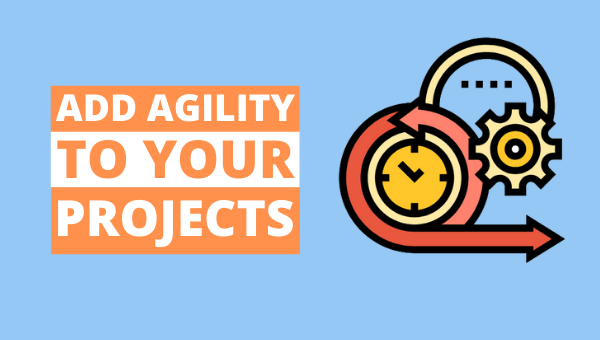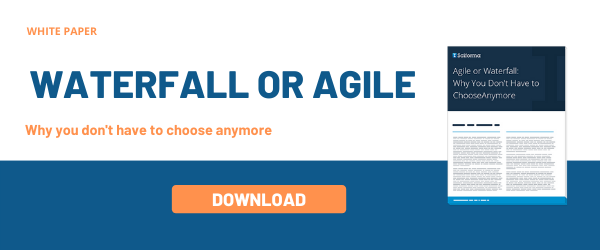- Home
- Blog Center
- Add Agility to Your Projects
Add Agility to Your Projects

Agile, Waterfall … Waterfall, Agility … Between these two project management methodologies, your heart rocks. On the one hand, the proponents of Agile claim that the collaborative, iterative approach on which it’s based gives better quality outcomes more quickly, while advocates of Waterfall claim the detailed, formalized approach gives better visibility and governance of the project itself.. So which methodology is best suited to your project? What if the solution lies in a hybrid methodology?
What are the main differences between Agility and Waterfall?
The Agile and Waterfall methodologies are directly different in their approaches. The efficiency of the chosen method will depend on the type of projects and the company that implements it. Indeed, the cascade (waterfall) methodology is often encountered in large industries such as the food, automotive industry or metallurgy industries. The Agile methodology is more common in companies developing software or unique products.
To put it simply, the management of Waterfall projects is done linearly over time. All stages of the project are carefully detailed and the interdependencies identified. The progress of the project depends on the completion of these stages: each block must be perfectly completed before moving on to the next. For a project developed in the waterfall methodology, the scope is fixed, the duration and the costs may vary.
An Agile PM methodology avoids a linear, sequential approach and instead favors an incremental, iterative one. Rather than extensive planning and design up front, the Agility methodology allows for changing requirements over time by using cross-functional teams to work on successive iterations over fixed time periods. The emphasis is on efficient face-to-face communication and short feedback loops. The goal of each iteration is to produce a working product, which can be demonstrated to stakeholders, with feedback incorporated into the next or future iterations. Unlike Waterfall, in Agile methodology, the scope is variable, the duration and the costs are fixed.
Incorporate Agile into your traditional project management
However, recently, more and more companies have been combining elements of the two methodologies, in order to adapt it to the practices and objectives of the company. Thus, the boundaries between Agile and Waterfall are blurring in favor of a methodology called Hybrid or Bimodal.
Depending on your maturity, adding Agile elements within your project management can considerably improve the efficiency of your organization’s projects; if you have the right tools.








Camélia Docquin
Camélia is Sciforma’s Global Marketing Director and enjoys learning different perspectives of the current business environment and project management challenges that enterprises and individuals face daily. Main interests include : innovation, digital transformation, and strategy execution.